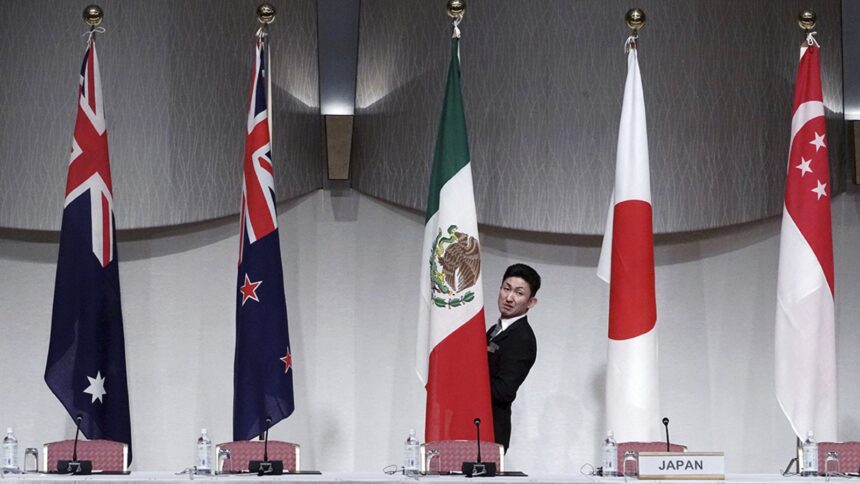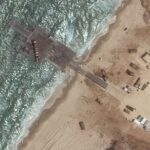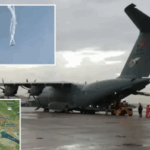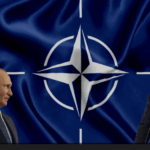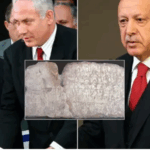Summary by Geopolist | Istanbul Center for Geopolitics:
The CFR brief presents a strategy for the United States to effectively shift its focus towards Asia. This involves strengthening alliances, expanding economic engagement, and enhancing military presence in the region.
Key actions include:
* Strengthening partnerships with countries such as Japan, Australia, and South Korea.
* Joining and leading regional economic frameworks.
* Countering China’s influence through diplomacy and trade policies.
The brief highlights a comprehensive approach that combines security, economic, and diplomatic tools to ensure regional stability and influence.
For more details, read the full brief here.
What challenges does China pose that require a U.S. shift to a vigorous Asia-centric strategy?
Throughout the 2010s and the under current leadership of Chinese President Xi Jinping, China has worked successfully to fundamentally alter the balance of power in Asia and beyond at the expense of the United States. The country significantly increased its military strength, applied economic coercion on countries that challenged Beijing’s objectives, and sought to undermine American vital national interests. Today, China is coupling its power and will to upend regional order in Asia and international order more broadly.
U.S.-China competition crosses multiple regions and domains, but rivalry and tension are most acute in the Indo-Pacific. China aims to replace the United States as the most important and influential nation in the Indo-Pacific, and to dominate that region. Chinese military power is most concentrated there and becomes attenuated with distance from the Western Pacific. The country’s maritime claims, border disputes, and threats of force focus on Asia. Its economic gravity is greatest there, and countries in the Indo-Pacific are particularly vulnerable to Beijing’s interference in their domestic politics.
A significant increase in U.S. national security’s time, attention, and resources devoted to Asia is required to address the deteriorating regional balance. While remaining engaged in other regions and protecting its interests across Europe and the Middle East, Washington should embark upon a renewed pivot to Asia. Our book, Lost Decade: The Pivot to Asia and the Rise of Chinese Power, describes how such an effort, which has bedeviled multiple U.S. administrations, could be done.
What should the elements of a renewed Pivot to Asia be?
Multiple elements are required, but a few are key.
The United States should increase its defense budget to ensure that more resources are available for every region. Washington currently spends barely 3 percent of its gross domestic product (GDP) on defense, approaching the lowest level by that measure since the 1990s post-Cold War peace dividend. Maintaining support for Ukraine is critical, but stronger European allies should allow the redeployment of U.S. air and naval assets to Asia. The United States can do the same in the Middle East, surging only for significant operations such as the Israel-Hamas conflict. In both these regions, steadfast American performance, much more than the number of troops and weapons on the ground, will secure U.S. influence.
Washington should revive its Asian economic agenda by joining the Comprehensive and Progressive Agreement for Trans-Pacific Partnership (CPTPP), which would increase U.S. access to regional markets, and vice versa. As a first step, the United States should pursue bilateral digital trade deals with Japan, South Korea, and Singapore or, better yet, aim for a regional digital accord. Washington should also allocate a greater share of foreign aid and development assistance to the Indo-Pacific, which currently receives only a meager percentage. Of $95 billion allocated in the 2024 supplemental security funding bill, for instance, less than 9 percent was set aside for Asia-Pacific security.
The United States has bolstered its regional alliances and currently leads coalitions to deal with China’s trade violations, intellectual property theft, covert interference in other countries’ domestic politics, and human rights abuses, but it should more robustly contest Beijing’s autocratic world view. The United States should stand for freedom, sovereignty, independence, and a stable world order based on liberal values and the rule of law.
Would shifting U.S. military resources to the Indo-Pacific degrade Washington’s capabilities to protect interests in Europe and the Middle East amid the wars in both regions?
The United States is and should remain a global power, and a renewed pivot to Asia should account for the resources devoted to other regions.
In Europe, the ongoing degradation of Russian military power in the war in Ukraine—and the revelation that Moscow’s military is significantly less powerful than originally thought—is combining with European steps to increase defense budgets, acquire new capabilities, and enhance military production lines. This provides a historic opportunity to pivot U.S. air and naval forces from Europe to new locations in the Indo-Pacific. Washington should continue to support European allies in areas where they suffer shortfalls: strategic lift, surveillance, and reconnaissance; munitions; and missile defense.
For more than a decade in the Middle East, Washington fed the perception of U.S. withdrawal without obtaining a significant resource dividend. This amounted to the worst of all worlds: deep and costly engagement in the region while fanning the fears of abandonment. Washington should invert this equation by diminishing its military presence in the region while bolstering its commitment to act. U.S. troop levels, air bases, maritime deployments, and more should decline in the Middle East, surging only if and when necessary for significant military operations.
In fact, the October 7 crisis reaffirmed a central argument of Lost Decade. When confronted with the conflict, the Joe Biden administration surged two aircraft carrier battle groups, attack and support aircraft, guided missile cruisers, destroyers, a Marine expeditionary unit, a nuclear submarine, air defense systems, and combat aircraft from outside the area to the Middle East. The secretary of state commenced regional shuttle diplomacy, President Biden visited Israel, and Congress appropriated billions of dollars in assistance. None of these moves turned principally on the preexisting U.S. military footprint in the region, and Hamas’s attack appears to have had nothing to do with the degree of U.S. presence. As Israel deals with Hamas and the Gaza Strip stabilizes over time, the United States should continue to shift selected military resources to Asia, even while continuing intense diplomatic engagement in the Middle East.
Is U.S. retrenchment on trade policy an obstacle to binding the region closer to Washington?
Yes. It was the collapse of the Trans-Pacific Partnership (TPP) trade deal, after all, that hollowed out the initial Pivot to Asia. Along with economic benefits for Americans, the TPP was meant to send a broad signal of sustained U.S. leadership and presence in Asia. Immediately following Washington’s withdrawal from the agreement, Beijing sought to fill the gap and assume the mantle of global economic leadership, including through its own regional trade agreement. And over time, each country in the Indo-Pacific has become more dependent on trade with China and more vulnerable to Beijing’s geoeconomic coercion.
The United States should join the Comprehensive and Progressive Agreement for Trans-Pacific Partnership, the deal which replaced TPP, and continue to de-risk economic ties with China. Joining CPTPP would increase U.S. access to lucrative Asian markets and give the United States the ability to shape rules in the region and beyond. Washington’s entry would also reassure regional partners that the United States remains committed to the Indo-Pacific. Given bipartisan skepticism of regional trade agreements, more politically palatable steps toward reentry, such as pursuing a bilateral or regional digital trade deal, could be critical first steps.
*Editor’s note: This article is based on the new book by Robert D. Blackwill, Henry A. Kissinger senior fellow for U.S. Foreign Policy, and Richard Fontaine, CEO of the Center for a New American Security, Lost Decade: The Pivot to Asia and the Rise of Chinese Power, now available to order.
by Robert D. Blackwill and Richard Fontaine
Source: Council on Foreign Relations (CFR)

